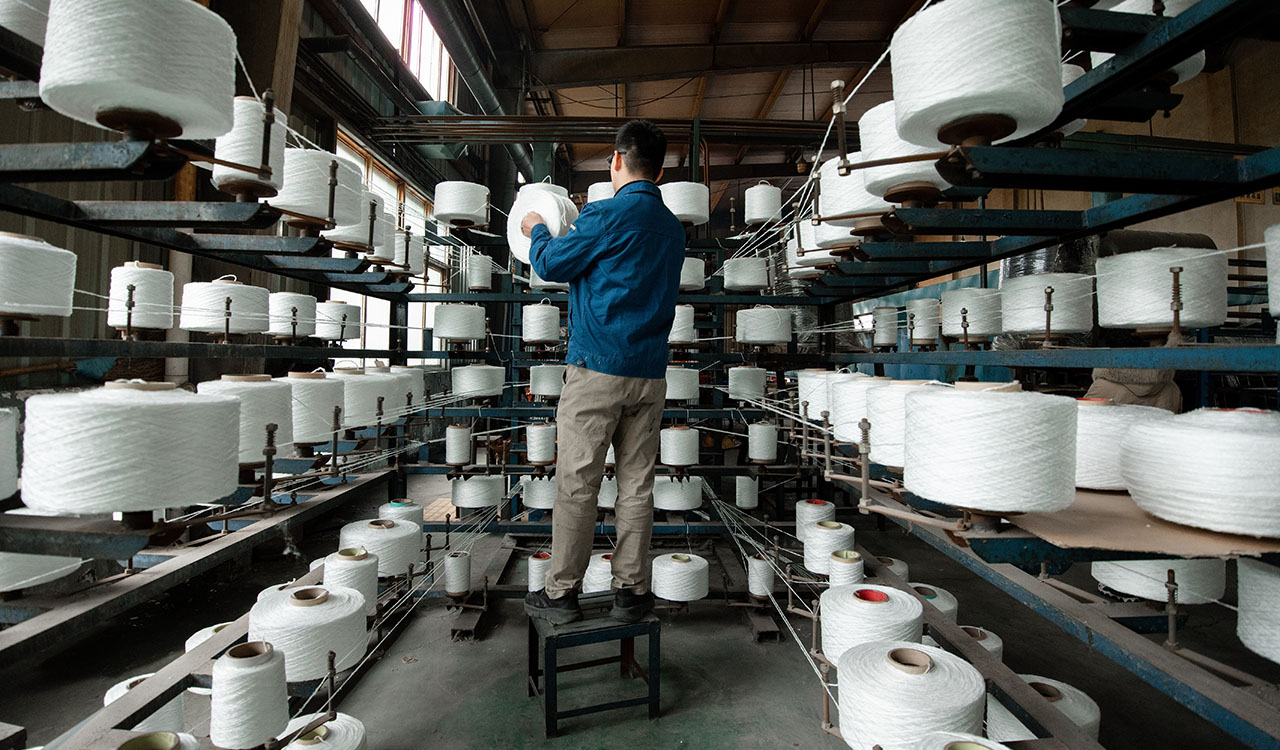Asia is emerging as a critical innovation node in the development of sustainable textiles. Spiber, a Japan-headquartered biotech firm is developing a ‘brewing’ process to convert sugarcane waste into staple fiber that can be woven into fabrics and bringing it to scale in a facility in Thailand. Singapore-based material science firm NEXTEVO has recently commissioned a plant in Vietnam that turns pineapple fiber into ready-to-spin (RTS) fibers.
The fact that Asia’s low-carbon textile production is small-scale and high-end may actually work in its favor, both for the success of the firms in the space and the health of the planet overall. Call it the luxury trickle-down effect. The influence of high-end brands on the mass market is a pervasive feature of the fashion industry: Designs, technologies and processes from luxury labels set trends in motion that rapidly take hold in the firmament of the industry as a whole.
Asia Holds the Green Line
Asia’s emerging greentech textile ecosystem is employing multiple tried-and-trusted economic development models. One key advantage: Five Asian countries exported some $437 billion worth of textiles last year, three-quarters of the total value shipped by the world’s top ten exporters. This manufacturing prowess is combined with Asia’s growing leadership in materials science and biotech engineering.
Asian economies also have a penchant for sharply focused industrial development policies to promote R&D around key disruptive technologies. Singapore’s government in particular relentlessly attracts greentech innovation and investment: Its 2025 budget ramped up green financing initiatives and promotion of low-carbon technology. In early 2024, Japan began issuing Climate Transition Bonds and the government ultimately plans to provide some 20 trillion Yen (US$134 billion) in seed investment for low-carbon technology projects over the next decade. Asia’s continued promotion of new clean technologies is turning the region into something of a green outlier in 2025. U.S. financial markets are turning positively hostile to sustainable investment in the Trump 2.0 era, and even the European Union is beginning to waver on its green financing commitments as fears around its crumbling economic competitiveness grow.
Sustainable Textile Growth
Asia’s move into sustainable textiles is well-timed, as it gives the region a new competitive arrow in its quiver at a pivotal moment in global trade and geopolitics. The region is not in any real danger of being dislodged from the center of the world’s textile value chain: Asian apparel producers consume an estimated 85 percent of the world’s fibers. China alone still accounts for 40 percent of global apparel production, despite nearly a decade of concerted efforts of U.S. and European brands to diversify their supply chains away from the country.
However, the U.S. is both intensifying its trade war against China and threatens to widen its tariff net globally, making Asian brands and apparel manufacturers nervous. Just as Hong Kong turned towards AI-enabled innovation in apparel design to enhance its role as a leading command center in the global apparel value chain, Asia’s forays into sustainable fabric production will help buttress its position in the global textile trade by diversifying product portfolios and creating new production efficiencies.
As Smooth as Silk
Spiber’s approach to textile production emphasizes both efficiency and sustainability. Since 2007 the company has been developing fermentation processes based on combining proprietary DNA with microorganisms in agricultural by-products to convert them into specific protein polymers. The company launched its Brewed Protein material in 2015, and in 2022 opened its mass production fermentation plant, with an annual output of 500 tons of polymer, in Rayong Thailand.
“The cost curve of sustainable fabric production in the years to come will be influenced by advancements in material development, scalability of production, and investment in manufacturing infrastructure” notes a Spiber executive who spoke to The Robin Report. “As we scale up for large-scale commercial production, our supply chain and production processes will continue to evolve to enhance efficiency and sustainability.”
Brewed Protein fibers have been spun into a variety of filament yarns, primarily for high-end garments, such as silk or cashmere analogs. Brewed Protein fabrics have formed the basis of a collaboration with Japanese designer Issey Miyake, who has incorporated them into their “TYPE-XI Spiber project,” within the fashion house’s A-POC Able collection which showcases technology-forward new materials and production processes. Other Spiber collaborations have been with outdoor performance brands such as Goldwyn Co, which released 17 items from four of its brands, including The North Face and Woolrich, as part of its ‘Regenerative Circle’ undertaking in its Fall/Winter 2024 collection.
One of the biggest challenges for low-carbon textile companies, Spiber notes, is the time and capital needed to bring new materials to market. “The cost dynamics differ greatly between lab-scale production and mass production, where cost efficiency is crucial for commercialization.” Transitioning from the former to the latter is complex.
“One key focus is the utilization of agricultural waste and by-products as feedstock. We have successfully conducted trial batches using bagasse-derived sugar at our Thai production facility and plan to integrate it more extensively into commercial production to support our sustainability goals.” While production volumes are still low, Spiber notes they are scaling production at their Thai plant “while adjusting output based on business needs” and developing to find cost- and time-saving improvements. “For instance, in 2023 we began cutting and crimping our fibers in-house at our Tsuruoka facility in Japan—a process that was previously outsourced. Insourcing allows us to optimize processing conditions, maintain consistent quality, and reduce supply lead times” which the company believes scalable production process as we expand.”
Spiber estimates that 200g of protein polymer (roughly the volume needed to spin fibers to create a square meter of fabric) produced through their fermentation process takes 40 hours. The company uses agricultural waste and by-products as feedstock for its polymers, currently primarily from sugarcane, certified by Bonsucro, which defines standards for environmental and socioeconomic sustainability in the global sugarcane industry and manages a certification system for sugar mills that supply Spiber. The environmental impact of this is profound: Spiber’s 2023 life cycle assessment study compared Brewed Protein fibers to Mongolian cashmere fibers or Australian merino wool fibers, and found their product uses 79 percent less greenhouse gas emissions, 99 percent less land and 97 percent less water than comparable luxury fibers.
The Long Trickle Down
Spiber’s Brewed Protein and other sustainable fiber products remain niche offerings, largely offering green alternatives for silk and other high fashion applications. This clearly limits the decarbonization impact that these firms have on the world’s textile industry. And while every little bit of green helps, quite a lot of sustainability is needed: It is estimated that less than one-half of one percent of textiles in the global supply chain are currently sourced from recycled material. Textiles make up the bulk of the global garment industry’s carbon footprint, which is variously estimated to contribute between five and ten percent of the world’s total annual greenhouse gas emissions.
Yet, the fact that Asia’s low-carbon textile production is small-scale and high-end may actually work in its favor, both for the success of the firms in the space, and the health of the planet overall. Call it the luxury trickle-down effect. The influence of high-end brands on the mass market is a pervasive feature of the fashion industry: designs, technologies and processes from luxury labels set trends in motion that rapidly take hold in the firmament of the industry as a whole. The broader influence of designers like Issey Miyake and high-performance brands like North Face may not be precisely quantifiable, but it is palpable.
The use of low-carbon fabrics on a wide enough scale may take time, but the technology processes which underpin the conversion of bio-waste into polymers are quickly reaching scale, and Asia’s garment sector is renowned for its ability to expand quickly on new processes once the trifecta of lowered capital costs, process efficiency and fashion cachet are met. Asia’s textile innovation crucible could soon (not immediately, but perhaps within the next three to five years) produce cheap and carbon-neutral fabric in volumes that could both materially impact the industry’s carbon footprint and sustain the region’s command of global supply chains.





